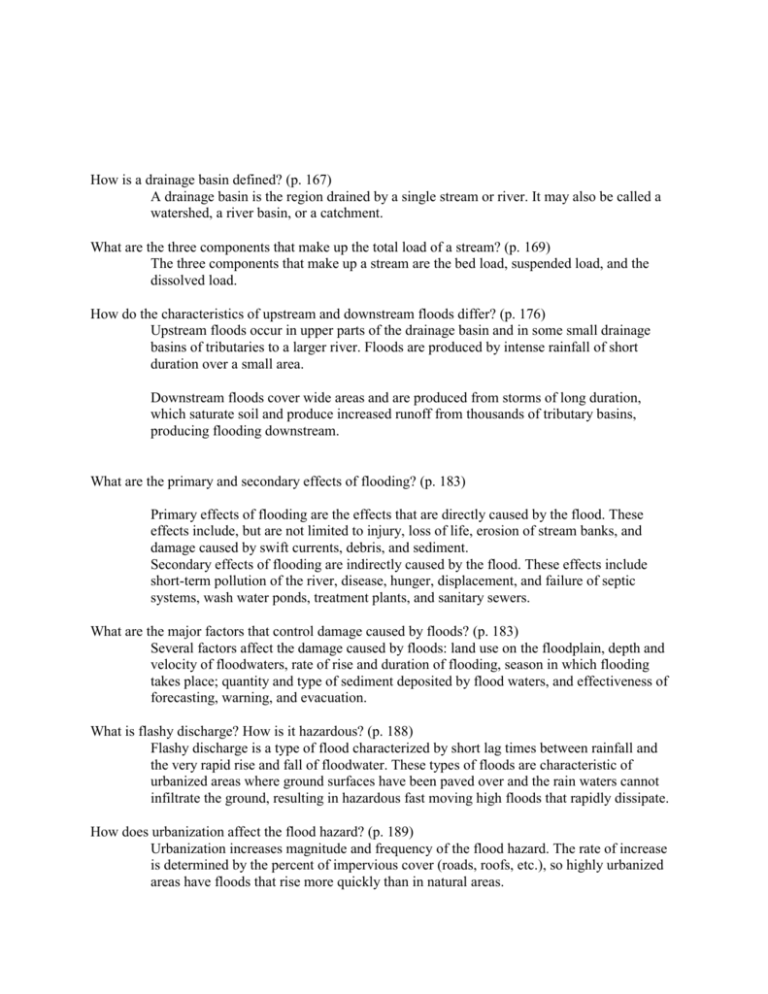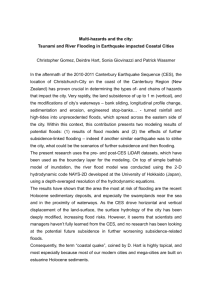floods - earthjay science
advertisement

How is a drainage basin defined? (p. 167) A drainage basin is the region drained by a single stream or river. It may also be called a watershed, a river basin, or a catchment. What are the three components that make up the total load of a stream? (p. 169) The three components that make up a stream are the bed load, suspended load, and the dissolved load. How do the characteristics of upstream and downstream floods differ? (p. 176) Upstream floods occur in upper parts of the drainage basin and in some small drainage basins of tributaries to a larger river. Floods are produced by intense rainfall of short duration over a small area. Downstream floods cover wide areas and are produced from storms of long duration, which saturate soil and produce increased runoff from thousands of tributary basins, producing flooding downstream. What are the primary and secondary effects of flooding? (p. 183) Primary effects of flooding are the effects that are directly caused by the flood. These effects include, but are not limited to injury, loss of life, erosion of stream banks, and damage caused by swift currents, debris, and sediment. Secondary effects of flooding are indirectly caused by the flood. These effects include short-term pollution of the river, disease, hunger, displacement, and failure of septic systems, wash water ponds, treatment plants, and sanitary sewers. What are the major factors that control damage caused by floods? (p. 183) Several factors affect the damage caused by floods: land use on the floodplain, depth and velocity of floodwaters, rate of rise and duration of flooding, season in which flooding takes place; quantity and type of sediment deposited by flood waters, and effectiveness of forecasting, warning, and evacuation. What is flashy discharge? How is it hazardous? (p. 188) Flashy discharge is a type of flood characterized by short lag times between rainfall and the very rapid rise and fall of floodwater. These types of floods are characteristic of urbanized areas where ground surfaces have been paved over and the rain waters cannot infiltrate the ground, resulting in hazardous fast moving high floods that rapidly dissipate. How does urbanization affect the flood hazard? (p. 189) Urbanization increases magnitude and frequency of the flood hazard. The rate of increase is determined by the percent of impervious cover (roads, roofs, etc.), so highly urbanized areas have floods that rise more quickly than in natural areas. What do we mean when we say that a 10-year flood has occurred? (p. 178) A 10-year flood means that a given level/magnitude of flooding is likely to reoccur once every 10 years. There is a 10% chance per year that a 10-year flood will occur. 1 year/ 10 years= 10%







